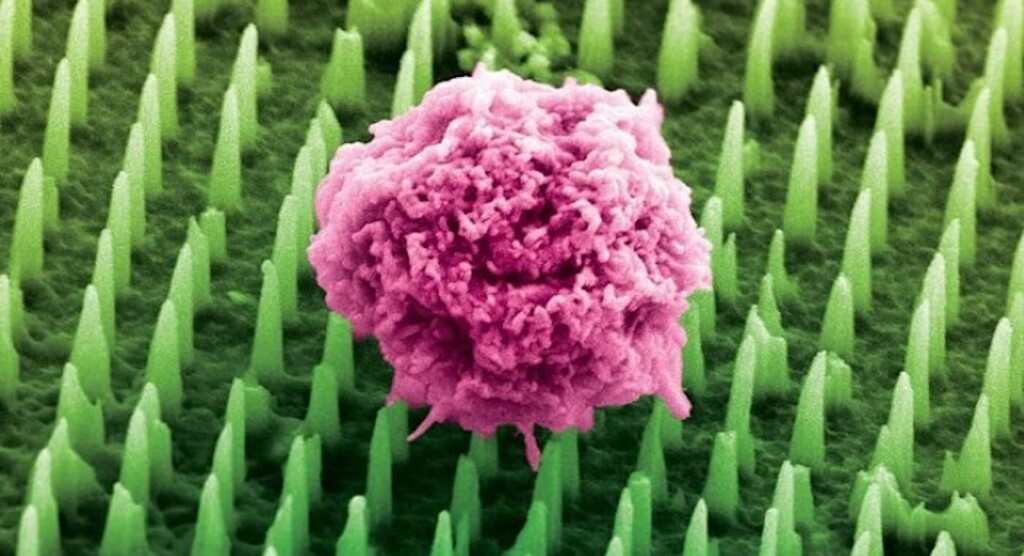 Nanoneedles patch for better biopsies -SWNS
Nanoneedles patch for better biopsies -SWNSNeedles 1,000 times thinner than a human hair could replace painful cancer biopsies and render obsolete the traditional methods of diagnosing diseases, according to new research.
The patches containing tens of millions of ‘nanoneedles’ offer a “painless and less invasive” alternative for millions of patients worldwide who undergo the common biopsy in order to confirm or monitor diseases including cancer and Alzheimer’s.
But traditional biopsies can cause complications, and the pain can deter patients from seeking early diagnosis or follow-up tests. They also remove small pieces of tissue, which limits how often and how comprehensively doctors can analyze diseased organs.
Now, scientists at King’s College London have developed a nanoneedle patch that painlessly collects molecular information from tissues—without removing or damaging them.
They say it could allow healthcare teams to monitor disease in real time and perform multiple, repeatable tests from the same area—something impossible with current biopsies.
Because the nanoneedles are so thin and don’t remove tissue, the research team found that they cause no damage or pain for patients compared to standard biopsies.
“We have been working on nanoneedles for 12 years, but this is our most exciting development yet,” said research leader Dr. Ciro Chiappini in a King’s College statement.
“It opens a world of possibilities for people with brain cancer, Alzheimer’s, and for advancing personalized medicine. It will allow scientists – and eventually clinicians – to study disease in real time like never before.”
In preclinical studies, the team applied the patch to brain cancer tissue taken from human biopsies and mouse models.
The nanoneedles extracted molecular ‘fingerprints’—including lipids, proteins, and mRNAs—from cells, without removing or harming the tissue.
The tissue imprint is then analyzed using mass spectrometry and artificial intelligence, giving doctors detailed insights into whether a tumor is present, and how it is responding to treatment.
“This approach provides multidimensional molecular information from different types of cells within the same tissue,” explained Dr. Chiappini. “Traditional biopsies simply cannot do that. And because the process does not destroy the tissue, we can sample the same tissue multiple times, which was previously impossible.”
He says the patch, described in the journal Nature Nanotechnology, could be used during brain surgery to help surgeons make faster, more precise decisions: by applying the patch to a suspicious area, results could be obtained within 20 minutes and speed up decisions about removing cancerous tissue.
Made using the same manufacturing techniques as computer chips, the nanoneedles can be integrated into common medical devices such as bandages, endoscopes and contact lenses.
“This could be the beginning of the end for painful biopsies.
“Our technology opens up new ways to diagnose and monitor disease safely and painlessly – helping doctors and patients make better, faster decisions.”
SHARE THE DEVELOPMENT With Medical Crews on Social Media…
Source link

